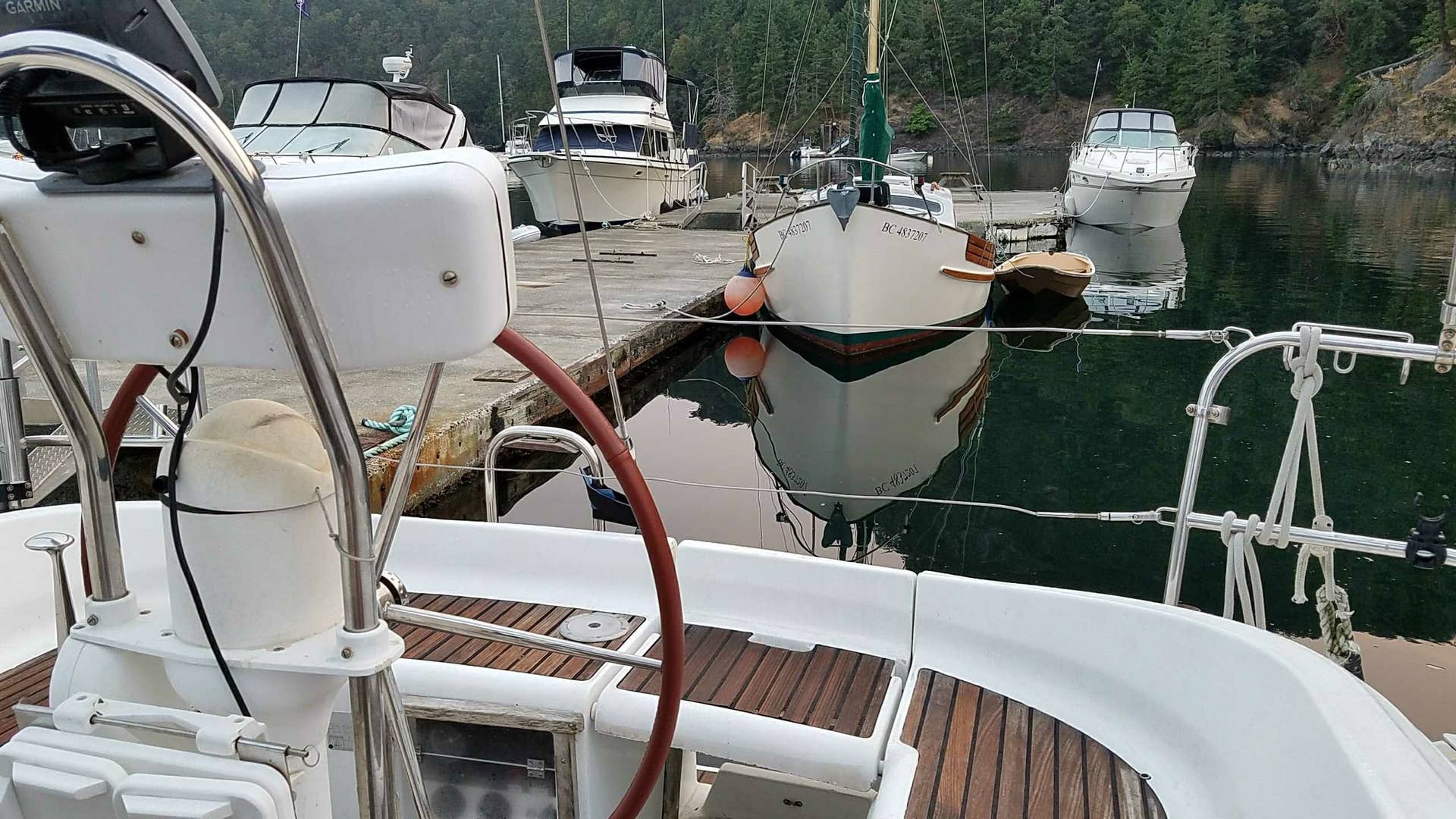I know the difference between the two is from the current. But need help tracking down a possible knot meter error.
I'm sailing a charter boat, a Jeanneau 40. The person who checked me out on the boat said the "boat is over engined and has a steep pitched prop. Set throte to get 7 knots indicated on knot meter and you should be sipping .5 gal/hr. I'm in the Salish Sea dealing with extreme current for the first time ever.
After 8 hours of mostly motoring yesterday I saw the GPS speed vary from 1 to 3 knots below that of the knot meter which was not adding up.
As i neared my destination I was showing GPS speed of 3.8 knots while knot meter showed 7. I did a course reversal and was seeing 7 knots on the GPS.
Here's the math I got. The two GPS speeds combined =11 knots for an average of 5.5 knots when speedo says 7.0.
Is my knot meter overstating the speed by 1.5 knots as I suspect?
I would like to operate the engine at its sweet spot and not burn twice the fuel for that last knot, but I also don't want to be puttering along at 5 ish knots while motoring.
Last question: If the knot meter is innacurate under power do I not get credit for reaching at 9.7 knots while jamming to Warren Zevon yesterday? Surely the knot meter is accurate under sail?
![Image]()
Sent from my SM-G935V using Tapatalk
I'm sailing a charter boat, a Jeanneau 40. The person who checked me out on the boat said the "boat is over engined and has a steep pitched prop. Set throte to get 7 knots indicated on knot meter and you should be sipping .5 gal/hr. I'm in the Salish Sea dealing with extreme current for the first time ever.
After 8 hours of mostly motoring yesterday I saw the GPS speed vary from 1 to 3 knots below that of the knot meter which was not adding up.
As i neared my destination I was showing GPS speed of 3.8 knots while knot meter showed 7. I did a course reversal and was seeing 7 knots on the GPS.
Here's the math I got. The two GPS speeds combined =11 knots for an average of 5.5 knots when speedo says 7.0.
Is my knot meter overstating the speed by 1.5 knots as I suspect?
I would like to operate the engine at its sweet spot and not burn twice the fuel for that last knot, but I also don't want to be puttering along at 5 ish knots while motoring.
Last question: If the knot meter is innacurate under power do I not get credit for reaching at 9.7 knots while jamming to Warren Zevon yesterday? Surely the knot meter is accurate under sail?

Sent from my SM-G935V using Tapatalk





